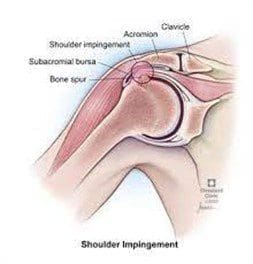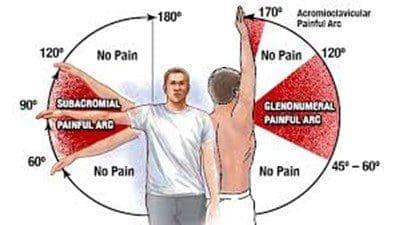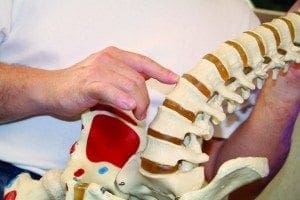Painful shoulder conditions that limit movement are very common, and are caused by injuries affecting the shoulder joint, muscles, tendons, ligaments and cartilage.
It is possible to do more movements with the arm than with any other part of the body. The arm is such a useful tool that it’s a pity that there are only two of them!
Since the nerves that supply the shoulder and arm originate from the neck and upper spine, conditions such as Vertebral Dysfunction commonly contribute to pain in the shoulder.
Our practitioners may be able to assist with the following shoulder conditions:
- Frozen Shoulder
- Chronic Shoulder Pain and Stiffness
- Shoulder Muscle Spasm and Tension
- Arthritis of the Shoulder
- Diagnosis of Shoulder Pain
- Rotator Cuff Disorders such as tears and strains
- Impingement Syndrome
- AC Joint Injury
In order to determine the cause of your pain, we will conduct a full physical, orthopaedic and neurological examination of the shoulder, cervical and thoracic spine. You may be asked to perform shoulder range of motion and muscle strength tests. Where the pain is felt, both at rest and during movement of the shoulder, provides important clues as to the cause of the shoulder pain. It may also be necessary to undergo specialized diagnostic tests such as XRay, Ultrasound and/or MRI scans.
Signs of Shoulder Injury may include restriction in the movements of the shoulder.
Treatment of Shoulder Pain
Regardless of the cause, treatment of the shoulder complex requires an experienced Physio who can test the movements and structures of the shoulder and come to an accurate diagnosis of the problem. Physio treatment can then focus on the core problem.
The initial objective of all shoulder injuries is to relieve pain and inflammation.
Whilst many doctors will recommend non-steroidal anti-inflammatory drugs (NSAIDs) to relieve pain and swelling, the benefit obtained by applying ice-packs can be equally, if not more beneficial.
As your shoulder begins to heal, it is vitally important to
- Restore range of movement,
- And later to improve muscle strength so as to stabilize the shoulder and help prevent further injury and aggravation.
Shoulder Impingement Syndrome
Shoulder impingement is one of the most common conditions presenting to our clinic. There are several different sub-types of impingements such as acromio-clavicular or coraco-clavicular impingement however the mechanisms behind them all are the same.
The pain associated with impingement occurs due to pain sensitive structures namely the rotator cuff tendon and bursae rubbing against bony structures during arm movement. These structures then become inflamed which increases pain levels with movement and can even lead to pain at rest.
The most common symptoms include pain at the tip and front of the shoulder especially with overhead movement. The pain is generally quite sharp in nature and is worsened as the arm/shoulder is elevated. It can also occur when loading the shoulder by lifting heavy objects. Patients often complain of loss of motion and power. The pain can also refer to the upper arm.

In the more severe cases, discomfort while sleeping, especially for stomach or side sleepers is also common.
Impingement can occur at any age; however, it is more common in people who perform repetitive overhead movements. Swimmers, tradesmen such as electricians, builders and even office workers are commonly affected. While there are some anatomical variations which leave individuals more susceptible it commonly affects all ages and sizes.
Treatment for people suffering impingement is centred around a few goals:
- Reduce inflammation of pain sensitive structures being impinged – anti-inflammatories and soft tissue techniques.
- Exercises to improve strength and control of the shoulder
- Adjustments/mobilisations to improve mobility of the shoulder and surrounding areas
- Education about aggravating activities- avoidance and coping mechanisms
The most frustrating thing associated with impingement is the duration of recovery. It commonly takes months to completely resolve. It is important to understand that no matter how frustrating this condition can be it resolved non-operatively.

There are other more serious conditions that affect the shoulder that must be ruled out. For successful management it is important that the correct diagnosis is achieved early on. Management procedures should be implemented early to give the patient the best desirable outcomes.


